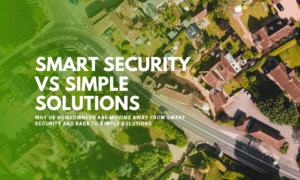In today’s digital age, having a fast and reliable internet connection is essential for various activities like browsing the web, streaming content, and working from home. However, slow internet speeds can be frustrating and hinder productivity. This article will provide you with practical tips and techniques to speed up your internet connection, ensuring a smoother online experience.
Check Your Current Internet Speed
Before diving into optimizing your internet connection, it’s important to assess your current internet speed. Several online tools can help you measure your internet speed accurately. Websites like Ookla Speedtest, Fast.com, and Google Internet Speed Test are reliable platforms for testing your connection speed. Perform a speed test and note down your download and upload speeds for future reference.
Reset Your Modem and Router
One of the simplest and often overlooked solutions to improve internet speed is resetting your modem and router. Over time, these devices can accumulate temporary files and configurations that can impact performance. By power cycling your modem and router, you can clear these caches and start fresh. To reset, simply unplug the power cables, wait for a few seconds, and plug them back in. This process can resolve common connectivity issues and boost your internet speed.
Optimize Your Wi-Fi Signal
If you’re using a Wi-Fi connection, optimizing your Wi-Fi signal can significantly improve your internet speed. Start by ensuring that your router is placed in a central location within your home or office. Walls and other obstructions can weaken the signal, so try to minimize physical barriers between the router and your devices. Additionally, reduce interference by keeping your router away from other electronic devices like cordless phones and microwaves. Changing the Wi-Fi channel can also help if you’re experiencing signal congestion. Access your router’s settings, usually through a web interface, and switch to a less crowded channel for better performance.
Update Firmware and Drivers
Outdated firmware and drivers can contribute to slow internet speeds. Manufacturers often release updates that enhance performance and fix bugs. Regularly check for firmware updates for your modem, router, and other network devices. Most manufacturers provide instructions and downloadable files on their official websites. Additionally, ensure that your device drivers, especially those for network adapters, are up to date. Visit the manufacturer’s website or use automatic driver update software to install the latest drivers.
Clear Cache & Temporary Files
Cache and temporary files accumulate over time and can affect your browsing speed. Clearing these files regularly can free up valuable storage space and improve performance. The process of clearing the cache varies depending on the browser and device you’re using. For popular browsers like Google Chrome, Mozilla Firefox, and Safari, you can usually find the option to clear cache in the settings or preferences menu. Follow the instructions provided by the browser to clear cache and temporary files effectively.
Disable Background Programs & Downloads
Background programs and downloads can consume valuable bandwidth and impact your internet speed. To maximize your available bandwidth for essential tasks, it’s advisable to disable unnecessary programs and downloads running in the background. Close any unused applications and pause or cancel ongoing downloads that are not immediately required. By minimizing the number of active processes, you can free up resources and improve your internet speed.
Use an Ethernet Cable for Wired Connections
While Wi-Fi offers convenience, a wired connection can provide faster and more stable internet speeds. If possible, consider using an Ethernet cable to connect your devices directly to the router. Wired connections bypass the potential signal interference and limitations of Wi-Fi, resulting in better performance. Most modern devices have Ethernet ports, and cables are readily available. Connect your device to the router using an Ethernet cable, and you’ll likely experience a noticeable improvement in internet speed.
Limit the Number of Connected Devices
Having numerous devices connected to your network can strain your internet connection and lead to slower speeds. Identify devices that are not actively used or don’t require a high-speed connection, and disconnect them temporarily. Prioritize essential devices and limit the number of connected devices to ensure optimal internet speed. By reducing the network load, you can enhance performance for devices that require a fast connection.
Optimize Browser Settings
Your browser settings can impact your internet speed and overall browsing experience. Optimize your browser settings to ensure smooth performance. Disable unnecessary browser extensions and plugins that may consume resources or generate excessive network requests. Adjust browser settings to prioritize performance over aesthetic features. Enable browser caching to store frequently accessed web page elements locally, reducing load times for subsequent visits. Additionally, regularly delete browsing history and cookies to prevent the accumulation of unnecessary data that can slow down your browsing speed.
Disable Auto-Updates & Background Services
Automatic updates and background services on your devices can consume bandwidth and impact internet speed. If you’re struggling with slow internet speeds, consider disabling auto-updates for applications and operating systems. Instead, manually initiate updates when your internet connection is not in high demand. Similarly, disable unnecessary background services and processes that consume network resources. By taking control of these settings, you can optimize your internet speed and allocate bandwidth more efficiently.
Use a Quality DNS Provider
The Domain Name System (DNS) translates domain names into IP addresses, allowing your devices to connect to websites. Using a reliable and fast DNS provider can improve your internet speed and browsing performance. By default, your internet service provider (ISP) assigns a DNS server, but alternative providers like Google DNS and Cloudflare DNS are known for their speed and reliability. Switching to a different DNS provider can be done through your device’s network settings or router configuration.
Use a Wired Connection for Streaming
Streaming services like Netflix, YouTube, and Spotify require a stable and fast internet connection to deliver high-quality content. If you’re experiencing buffering or slow loading times while streaming, consider using a wired connection instead of relying solely on Wi-Fi. By connecting your streaming device directly to the router using an Ethernet cable, you can eliminate potential Wi-Fi signal issues and ensure smoother streaming without interruptions.
Consider Upgrading Your Internet Plan
If you’ve exhausted all the optimizations and are still experiencing slow internet speeds, it may be time to consider upgrading your internet plan. Internet service providers offer a range of plans with varying speeds and bandwidth limits. For instance, Frontier internet plans have a starting price of $44.99 per month, with speeds up to 5 Gbps. Assess your usage requirements, such as the number of connected devices, online activities, and the size of data transfers. Contact your ISP to explore available options and choose a plan that best suits your needs and budget. Upgrading to a higher-speed plan can provide a significant boost in internet speed and improve your overall online experience. However, upgrading to a high-speed internet plan can be costly, so you should look for one of the ACP internet providers, to avail of the $30 per month discount.
Conclusion
In today’s fast-paced digital world, a slow internet connection can be frustrating and hinder productivity. By following the tips and techniques mentioned in this article, you can optimize your internet speed and enjoy a smoother online experience. From resetting your modem and router to optimizing browser settings and considering an upgrade, there are various steps you can take to improve your internet speed. Experiment with these methods and find the ones that work best for you. With a faster internet connection, you can browse, stream, and work more efficiently.





























